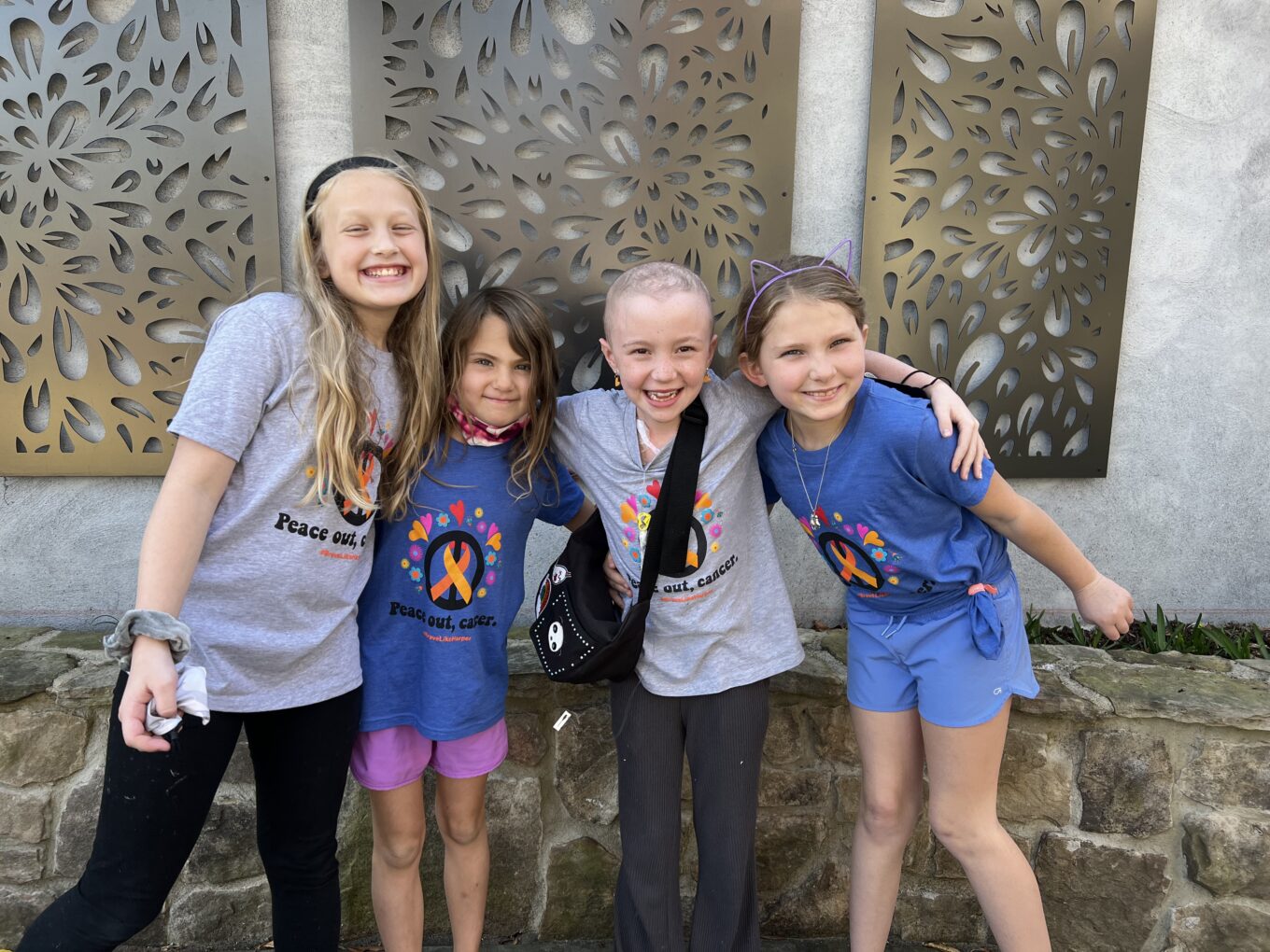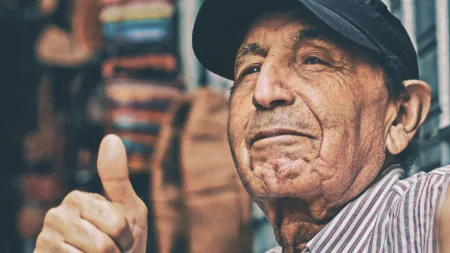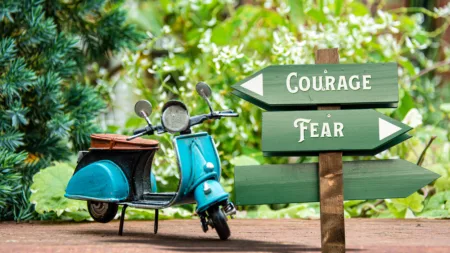Although childhood cancers are rare, they are still the leading cause of disease-related death for kids and adolescents after infancy. Each September, numerous organizations, institutions, families, and patients work to raise awareness of this issue through Childhood Cancer Awareness Month.
The concept for this awareness campaign began in 1990 with a Presidential proclamation by George H. W. Bush to turn October into the first National Awareness Month for Children with Cancer. [[1]]
September was officially recognized as National Childhood Cancer Awareness Month on September 26, 2019.
Many organizations display gold ribbons, host events, or advocate for childhood cancer research. Some soccer clubs wear unique uniforms or gold socks to recognize the patients and families dealing with this disease.
For Harper Harrell, this month is a chance to celebrate. Her scans have come back clean, which means she is on the road to recovery from acute lymphoblastic leukemia (ALL).



What Is Acute Lymphoblastic Leukemia?
ALL is a type of blood cancer. It affects the white blood cells, so the disease begins in the bone marrow. It’s extremely rare in the United States, with fewer than 20,000 cases diagnosed yearly.
ALL is also called the “good” cancer. Many doctors and nurses tell parents that if a child is going to get cancer, acute lymphoblastic leukemia is the one you want them to get.
The symptoms of ALL are often non-specific in children, which is why they can be challenging to detect. The most common complaints include small red spots or lines on the skin, aching bones, excessive bruising, enlarged lymph nodes, headaches, fever, and shortness of breath. [[2]]
It can be difficult to manage all those symptoms at once. For Harper, it was a chance to embrace her courage. “I am most proud of how brave I have been,” she told us at Be Inspired. “Everyone always told me I was brave, but I didn’t know I was ‘this’ brave. Some days, it’s hard to believe it, but now I know I can do anything.”
Anyone of any age can be diagnosed with ALL, but most cases discovered in the United States occur in children. It is most common in kids under the age of 5.
ALL is the most common leukemia type in children and teens under the age of 20. It accounts for 75% of the diagnoses that occur each year. [[3]]
It is a challenging disease when it develops in adults, but ALL is highly treatable in children. The five-year survival rate for those under the age of 20 is 89%, but it drops to only 40% for those who are older.
According to St. Jude Children’s Research Hospital, about 98% of children start to see symptom remission within a few weeks of starting treatment for acute lymphoblastic leukemia. [[4]]
The treatment process involves three phases: Induction works to kill the disease cells in the bone marrow and blood to put the cancer into remission. Intensification (or consolidation) rids the body of remaining cells that could cause the disease to return. Maintenance keeps working to destroy any remaining cancer cells that survived the first two phases of the treatment plan.
Harper will continue having rounds of chemotherapy into 2024 to ensure that the cancer doesn’t return. One of the tricky components of this diagnosis is that ALL likes to return once the treatments stop.
“Harper is the sweetest, bravest, and most kind girl I have ever met,” said one of the staff at the CHC where Harper receives treatments. “No matter how hard it’s going, she always has a smile and a positive attitude.”

“We all love Harper at the CHC and we will help her in all that we can.”
No Two Days Are the Same When Dealing with ALL
Laughter is strong medicine. It brings people together in ways that create emotional and physical changes in the body. When people laugh, the physical reaction works to soothe tension. It also stimulates circulation while helping muscles to relax. [[5]]
We asked Harper what makes her laugh. “My mommy’s silly jokes, the dance parties we’ve had, and playing with Jimmy, my silly pup,” she said.
Laughter provides more than a short-term respite from what is happening in life. When people deal with a serious illness like ALL, a lifestyle that includes some giggles each day can deliver some long-term benefits.
Relieves Pain. Laughter causes the body to produce hormones and chemicals that function as natural painkillers.
Improves mood. Chronic illnesses often cause co-existing conditions, such as depression. Laughter helps to lessen the anxiety and complicated feelings that come during these moments while improving self-esteem.
Increased Satisfaction. When people can laugh, connecting with others while coping with challenging situations is often easier.
Immune System Strength. Negative thinking can manifest into chemical reactions that cause more stress to affect the body. This process can decrease the immune response when cancer or other diseases are present. Positive thoughts that trigger laughter can release neuropeptides that give the immune system an extra boost. [[1]]
Harper told us that no two days are the same when dealing with ALL. “Some days are easy, and they seem like normal,” she told us. “Other days, there is a lot of pain, nausea, and just not feeling great. Thankfully, I have more good days than bad days!”
Fighting Cancer Can Take Everything You’ve Got
“This [process] isn’t easy,” Harper told The News and Observer recently. “Treatment can be difficult. It makes you feel sick – all sorts of things that you never thought you would feel. Sometimes, you can’t identify the pain, or anything else… you just feel really different.” [[7]]
Even through the challenging battles that ALL brought, Harper told Be Inspired that there are great memories from this experience. She said her favorite moment from this experience was creating a t-shirt that helped to raise money for cancer research.
“I enjoyed the whole process of creating the ‘Peace Out, Cancer’ shirt design and tagline,” Harper said, “and watching them be so successful.”
Coach Mike Krzyzewski is a close family friend, and he sent Harper a care package right after she received her ALL diagnosis. “When my mom and I started talking about how we can turn something bad that happened into something positive,” said Harper, “we talked about the V Foundation and Coach’s connection to Jimmy V, along with all the good things they do for cancer research.”
“That’s when I knew that I wanted to help them to help other people.”
What Is the V Foundation for Cancer Research?
The V Foundation was created by legendary basketball coach Jim Valvano and cable sports channel ESPN. It first opened its doors in 1993 with the dream to “achieve Victory Over Cancer.” Since that time, the nonprofit organization has awarded nearly $290 million in cancer research grants. [[1]]
“It takes a lot of teamwork and dedication to move towards curing cancer,” the V Foundation’s website says.
Jim Valvano is remembered for many things, including being a broadcaster, player, and coach. To his family, Valvano was a father, a husband, and a friend. When he received a cancer diagnosis at age 46, it was clear that he would never give up his fight against this disease. [[2]]
“Cancer can take away all of my physical abilities,” Valvano said. “It cannot touch my mind; it cannot touch my heart, and it cannot touch my soul – and those three things are going to carry on forever.”
Valvano led the NC State University Wolfpack to a Cinderella finish in the 1983 NCAA Championships. The most poignant memory for those in attendance or watching on TV was Valvano running around the court after winning the game, looking for someone to hug.
Although cancer eventually got the best of Jim, he never gave up. His efforts made it so that cutting-edge research could expand to help the world one day declare its Victory Over Cancer. His actions have positively affected millions of people, and Harper wanted to contribute to that cause.
Her attitude about cancer is the same as Valvano’s, and her message is simple. “Keep fighting,” she said. “You can do this! I know it’s hard, but you’re brave. Even if you might not know it, everyone else does. You are so brave!”
How Harper Started Raising Money to Fight Childhood Cancer
Harper, like many nine-year-olds, has a sketchbook where she likes to doodle and experiment with different ideas.
While dealing with her ALL diagnosis, she drew a ring of hearts and flowers. Inside that circle was a peace sign that was wrapped by a gold ribbon. “Peace Out, Cancer,” the shirt reads, with the #BraveLikeHarper campaign hashtag tucked underneath the tagline.
That design was turned into a fundraising t-shirt thanks to the help of Custom Ink.






Photos courtesy of Heather Hindin
In 1999, three former college classmates decided to start a job about a year after graduating. Marc Katz is one of the company’s co-founders and currently serves as its Chief Executive Officer. He says that working a Wall Street job “didn’t have a lot of heart,” and he wanted to do something meaningful with his entrepreneurial spirit. By March 2000, Custom Ink was launched to help create unique designs for companies, charities, clubs, or family reunions.
“We provide free expert art assistance, help with design templates, and deliver a thorough proofing process to ensure every custom design is perfect,” a representative told Be Inspired. “We believe that custom apparel ignites a sense of belonging and connection.”
Harper’s t-shirt design helps to raise money for her treatment costs while paying it forward to the V Foundation. So far, her sales on Custom Ink have allowed for more than $24,000 to be donated to cancer research.
“Peace out cancer means goodbye cancer,” Harper told The News and Observer. “I am very happy people are contributing.”
Be Inspired- Be Brave Like Harper
Having something to look forward to in the future makes things easier when dealing with difficult days in the present.
“We thought about how we can make ourselves feel better about what we’re going through by helping others who may not be as well-positioned as we are,” Heather Hindin, Harper’s mom, told WRAL-5 in February. [[1]]
We asked Harper where she would go if she could travel anywhere. “I think I would choose Australia,” she said. “I like their accents; they have beautiful beaches, koalas, and I like how they use different words and phrases for things.”
She’s also looking forward to possibly returning to school in November. Until then, she’s watching Bluey, reading the Amulet series, and enjoying her quiet time.
Harper told us she wants to continue raising money to help others fight childhood cancer. “I hope to do a lot of fundraising for the V Foundation!” she said. “I also hope to eventually become a pediatric cancer nurse. The nurses that have helped me this past year have taught me a lot, and they’ve given me a lot of opportunities to learn about being a nurse.”
All donations, including those in the #BraveLikeHarper campaign, are matched through the end of September by Mark and Cindy Pentecost, founders of It Works!, up to $1 million. [[2]]
“When I look for something good that came out of my diagnosis, the first thing I think about is how much more time I get to spend with my family than if I hadn’t gotten sick,” Harper said. “I would be in school every day, and we wouldn’t be together as much.”
What Can You Do to Help Stop Childhood Cancer?
With Harper and others out there fighting, childhood cancer doesn’t stand a chance – but they need your assistance. You can help by picking up one or more of her fundraising t-shirts at Custom Ink until the middle of September, or by making direct donations to organizations like the V Foundation throughout the year.
“She’s a remarkable kid, and always has been,” said Hindin.
“If you want to do something, do it, because you have to follow your dreams,” said Harper. “It’s the best part of life.”
References:
[[1]]https://www.sciencedirect.com/topics/neuroscience/neuropeptides; [[2]]https://www.presidency.ucsb.edu/documents/proclamation-6220-national-awareness-month-for-children-with-cancer-1990; [[3]] https://www.hopkinsmedicine.org/health/conditions-and-diseases/leukemia/acute-lymphocytic-leukemia; [[4]] https://www.cancer.net/cancer-types/leukemia-acute-lymphocytic-all/statistics; [[5]] https://www.stjude.org/disease/acute-lymphoblastic-leukemia-all.html; [[6]]https://www.mayoclinic.org/healthy-lifestyle/stress-management/in-depth/stress-relief/art-20044456; [[7]] https://www.heraldsun.com/news/local/article264686699.html; [[8]]https://www.v.org/about/remembering-jim/; [[9]] https://www.imdb.com/name/nm1717366/bio; [[10]] https://www.wral.com/durham-8-year-old-raises-thousands-for-cancer-research/20117637/; [11]] https://www.forbes.com/sites/karstenstrauss/2013/11/26/high-school-teacher-turned-multi-millionaire-it-works/?sh=48be95db1409












